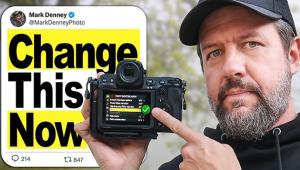Photo Retouching Techniques
A Step By Step Guide For Big Prints From 35mm Film
The art of photography and
digital imaging has always been the kind of experience where the learning
process never ends. There are always new techniques, pieces of equipment,
or goals for the photographer to conquer. While the current state of
digital photography allows studios to offer a variety of output options
to customers, anything that can help set you apart from the competition
is always an advantage. One of the more popular techniques I have been
using lately involves the digital manipulation of images in Adobe Photoshop,
Corel Painter, and Genuine Fractals. |
|||
Step 1: Next I performed any large spotting and retouching procedures on the image file. In this sample image we cloned the portion of the backdrop in the upper left-hand corner of the image, and repaired any large dust spots in the image. This is also the time where any straightening or cropping should be performed. Part of this technique involves compositing two images at a later stage, so if the pixel dimensions are kept the same throughout the process, the compositing remains very simple as you will see in later steps. Lastly, we save the image as a TIFF file. We also save the original file and archive the whole session to CD once we are finished. |
|||
Step 2: |
|||
Using a Wacom Intuos graphics
tablet, I simply paint the image to our liking. It is important to remember
that losing some detail in our case is fine. In the next step I am going
to bring this soft image back into Photoshop, and will be able to precisely
control how much of this softness we want to keep when compositing this
with the original. |
|||
Step 3: |
|||
Step 4: |
|||
Step 5: |
|||
Step 6: Closing Comments |









































